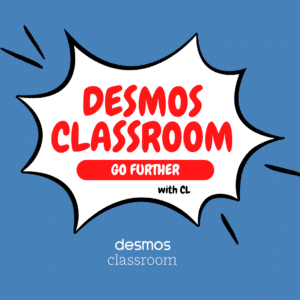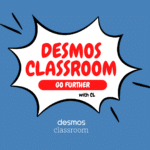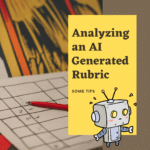There is hardly a magic bullet for student engagement. However, there are certain things we can be certain won’t be that engaging. There are also things that as teachers we can do that will likely increase student engagement. One of the things to consider when determining if something will be engaging is if the activity has at least one of the 4 C’s of 21st century education.

What Are the 4 C’s?
The 4 C’s came about to consider how students were actively engaging in an activity. In the above worksheet it is pretty obvious from working on it that it lacks student engagement. A quick run through the lack of any of the 4 C’s confirms it. However, what about activities that are not so obviously boring?
Collaboration
Collaboration is not cooperation. There should be discussion and task switching. Collaboration and cooperation both involve working together towards a common goal. However, there are some key differences in how they approach the task.
Collaboration usually involves individuals or groups working together to complete a task by sharing ideas, resources, and responsibilities. In a collaborative environment, everyone has equal input and is expected to contribute to the group’s success. Collaboration often requires a higher level of interdependence between team members and a more shared ownership of the final product.
Cooperation, on the other hand, involves individuals or groups working together to complete a task by dividing the work and working on specific parts independently. In a cooperative environment, each individual has their own responsibility, and everyone is expected to complete their portion of the task. Cooperation often involves less interaction between team members and a more clear-cut division of labor.
Collaboration:
- A group of students working together on a group project, brainstorming ideas, and pooling their resources to create a final product.
- A team of scientists collaborating on a research project, each contributing their expertise to produce a groundbreaking discovery.
- A group of artists collaborating on a mural, each contributing their unique style to create a cohesive piece of art.
Cooperation:
- A group of students dividing up research topics for an essay and working independently to research and write their sections.
- A team of nurses working together on a patient’s care plan, with each nurse responsible for specific aspects of the patient’s care.
- A group of construction workers working together to build a house, with each worker responsible for a specific part of the construction process like the one on these extra resources.
Critical Thinking
One way to measure critical thinking is by using the Depth of Knowledge (DOK) scale. Increase engagement by making the tasks at least DOK 2.
I saw Trever Reeh tweet out this activity where instead of having students crank out the answers to math problems the students try to figure out what the question could have been. I assigned my students to groups of three so they could collaborate and discuss how they would use each property rule to come up with 8 x to the third. It would have taken them only a few minutes to simplify 4 DOK 1 math problems. However, since this one required more creative critical thinking it took them much longer. The students were incredibly engaged in the task. They all agreed they got more out of doing this one “Another way to solve it” activity than if they had done an entire page of math problems.
Thinking is engaging. Recalling, not as much.
Using the “Another Way to Solve It” routine in Algebra 1 with properties of exponents. https://t.co/FOlBbLhFpu #mtbos #iteachmath pic.twitter.com/T6e4VTpBnh
— Trever Reeh (@treverreeh) February 27, 2023
Creative Thinking
If all students are getting the same output it is not creative thinking and probably not critical thinking. Getting to make a decision and putting your own spin on something can increase your engagement in a task. Creative thinking involves using imagination and original ideas to approach a problem or task. In an assignment, creative thinking might involve developing a unique solution, coming up with a new perspective, or using non-traditional methods to achieve a goal. Creative thinking can help students develop a deeper understanding of the material they are learning by encouraging them to engage with it in a more meaningful way. By using creativity to approach a problem or task, students may be able to connect ideas and concepts in new and unexpected ways, leading to a deeper and more lasting understanding of the material.
Here are some examples of creative thinking in an assignment:
- Instead of writing a traditional essay, a student might create a podcast or video to present their ideas.
- A student might approach a math problem in a new and unconventional way, using visualization or analogies to help them solve the problem.
- A student might use metaphors or storytelling to explain a scientific concept, making the topic more engaging and memorable.
Communicate Ideas
We’ve all heard someone talk a lot but communicate little. Communication of ideas is not just saying the steps you went through to find the solution. Communicating ideas tends to focus more on the overall message or conclusion, while showing your work or explaining what you did is more focused on the process or methodology. When communicating ideas, it is often important to provide enough detail and context to help your audience understand your perspective.Communicating ideas can involve a degree of creativity, as you may need to find new and innovative ways to present your ideas.
Encourage Student Ownership of Learning
When lesson planning try to ensure that students have an opportunity to engage in at least one of the 4 C’s. By including the 4 C’s in an assignment, teachers can encourage students to take ownership of their learning by providing them with the opportunity to think critically, communicate effectively, collaborate with others, and explore their own creativity. This can help students become more engaged in their learning process, take more responsibility for their own learning, and develop the skills they need to be successful in the modern world.
- So, You Want to be an #MIEExpert? – Part 1 By @VictoriaTheTech
- 50 Things to Go Further with Google Classroom – A Student Centered Approach
- Be Notified: New Google Classroom Book
- Engage Students with Google Jamboard
- Google Classroom: Create Group Documents
-
10 Ways Teachers Can Unleash the Power of Appsheet
AppSheet lets teachers build their own apps without code! Here are 10 ways to use AppSheet for teachers for custom classroom solutions.
-
CTRL L: Leveling Up Student-Centered Learning with a Simple Shortcut
The simple shortcut Ctrl+L might seem insignificant, but it can be a powerful tool in a student-centered classroom.
-
Chrome for the Classroom: Essential Updates Every Teacher Should Know
Chrome is always improving. If you use Chrome for the classroom you will want to check out these essential updates.
-
30 Keyboard Shortcuts That Teachers Need
The secret to feeling more confident on the computer is keyboard shortcuts! Here are 30 Keyboard Shortcuts That Teachers Need
-
Hide All Tabs – Google Sheets
Have a lot of tabs in your Google Sheets spreadsheet? Here is how to hide all tabs at once, quickly.
-
Transform Your Lessons: The Power of Desmos Classroom Computation Layer
Take Desmos Classroom even further with the computation layer. Customize your lesson with the CL.
The 4 C’s Are Engaging
The 4 C’s of 21st Century learning are a set of skills that are believed to be essential for success in the modern world.
- Critical thinking: The ability to analyze information, evaluate arguments, and make sound judgments.
- Communication: The ability to communicate effectively in a variety of settings and using a range of media.
- Collaboration: The ability to work effectively with others, to share ideas, and to contribute to a team effort.
- Creativity: The ability to generate new and innovative ideas, to think outside the box, and to approach problems in new ways.
Engaging students in the 4 C’s can be beneficial
- Fosters deeper learning: Engaging students in critical thinking, communication, collaboration, and creativity can help them develop a deeper understanding of the material they are learning, by encouraging them to engage with it in a more meaningful way.
- Increases student motivation: When students are given opportunities to engage in the 4 C’s, they may be more motivated to learn, as they are able to see the relevance and practical application of the skills they are developing.
- Prepares students for the future: The 4 C’s are essential skills for success in the modern world, and by engaging students in these skills, teachers can help prepare them for success in their future careers and personal lives.
- Encourages student ownership of learning: Engaging students in the 4 C’s can help them become more active participants in their own learning, by encouraging them to take ownership of their learning and to develop the skills and strategies they need to be successful.
Overall, engaging students in the 4 C’s can be a powerful way to increase student engagement and enhance learning outcomes. By fostering critical thinking, communication, collaboration, and creativity, teachers can help students develop the skills they need to be successful in school and beyond.
Develop Skills Students Need to Be Successful Beyond School
In addition to that the 4 C’s are engaging, teachers can use the 4 C’s to develop skills students need to be successful beyond school in many ways.
Firstly, by incorporating critical thinking activities into assignments, teachers can help students analyze information, evaluate arguments, and make informed decisions.
Secondly, teachers can encourage students to improve their communication skills by assigning collaborative projects and group work that require effective communication among team members.
Thirdly, teachers can promote collaboration by assigning group projects that require students to work together to achieve a common goal, encouraging them to develop teamwork and leadership skills.
Finally, teachers can foster creativity by providing opportunities for students to develop innovative ideas, use their imagination, and explore new perspectives.
By engaging students in the 4 C’s, teachers can help students develop the skills they need to be successful beyond school, such as critical thinking, effective communication, teamwork, leadership, and creativity.















